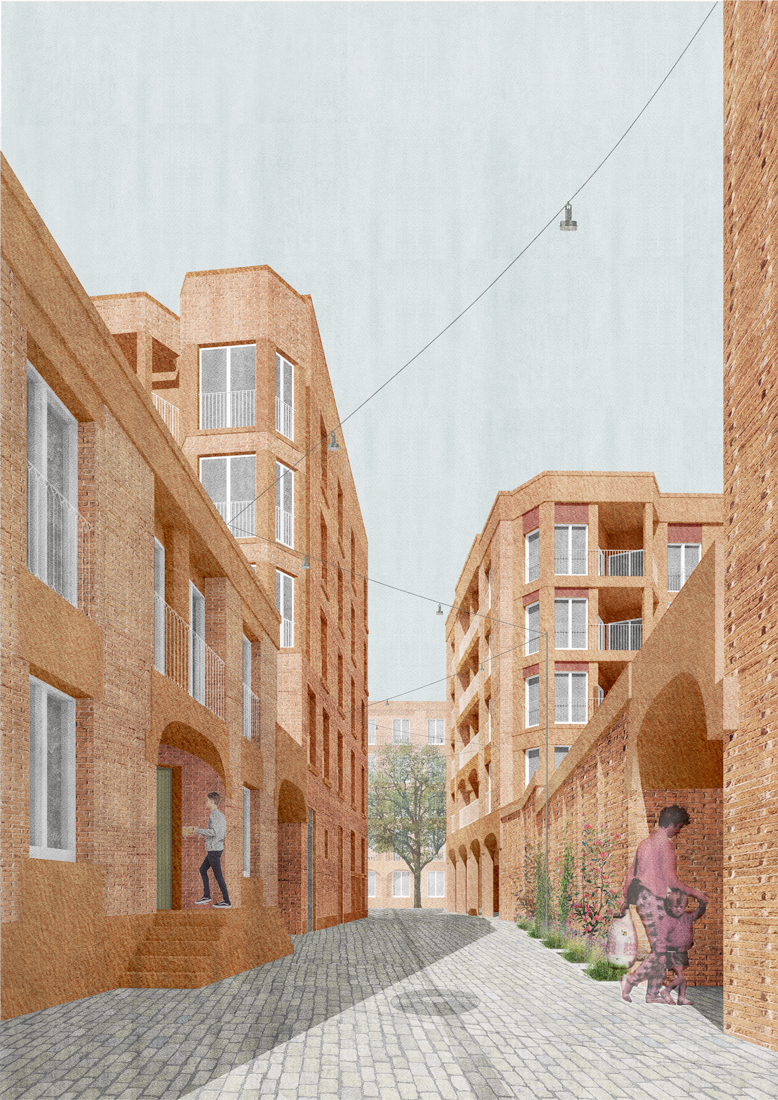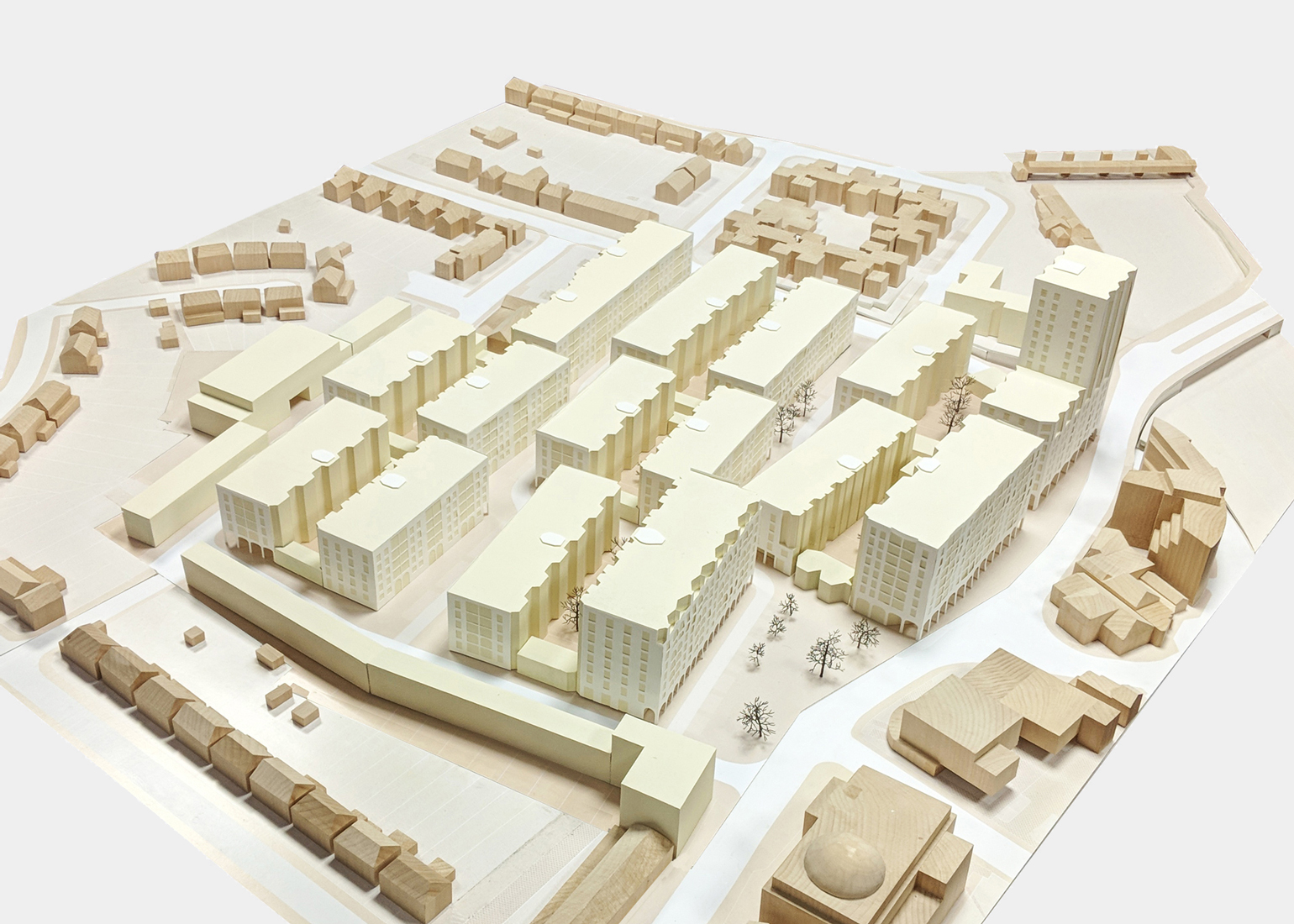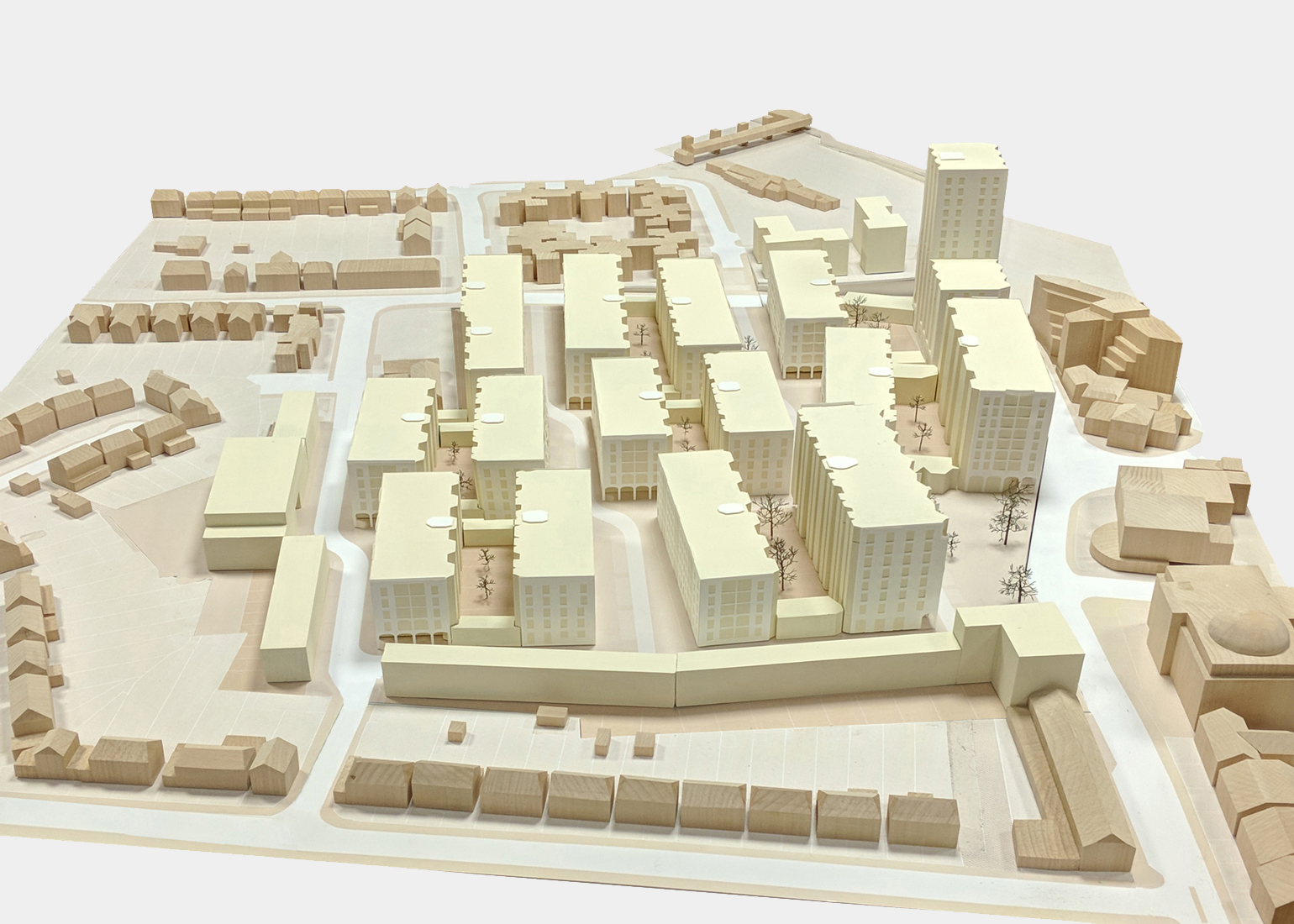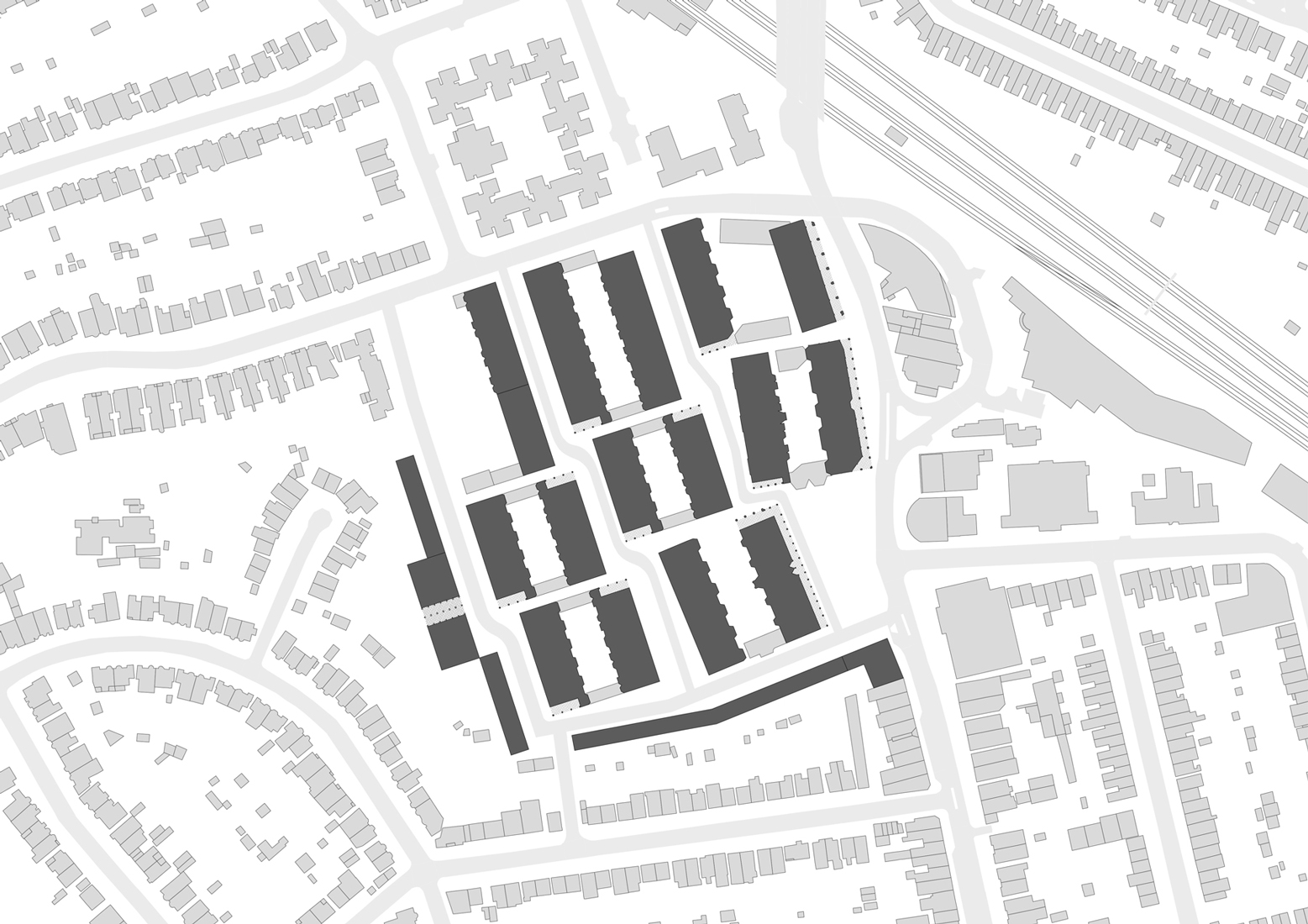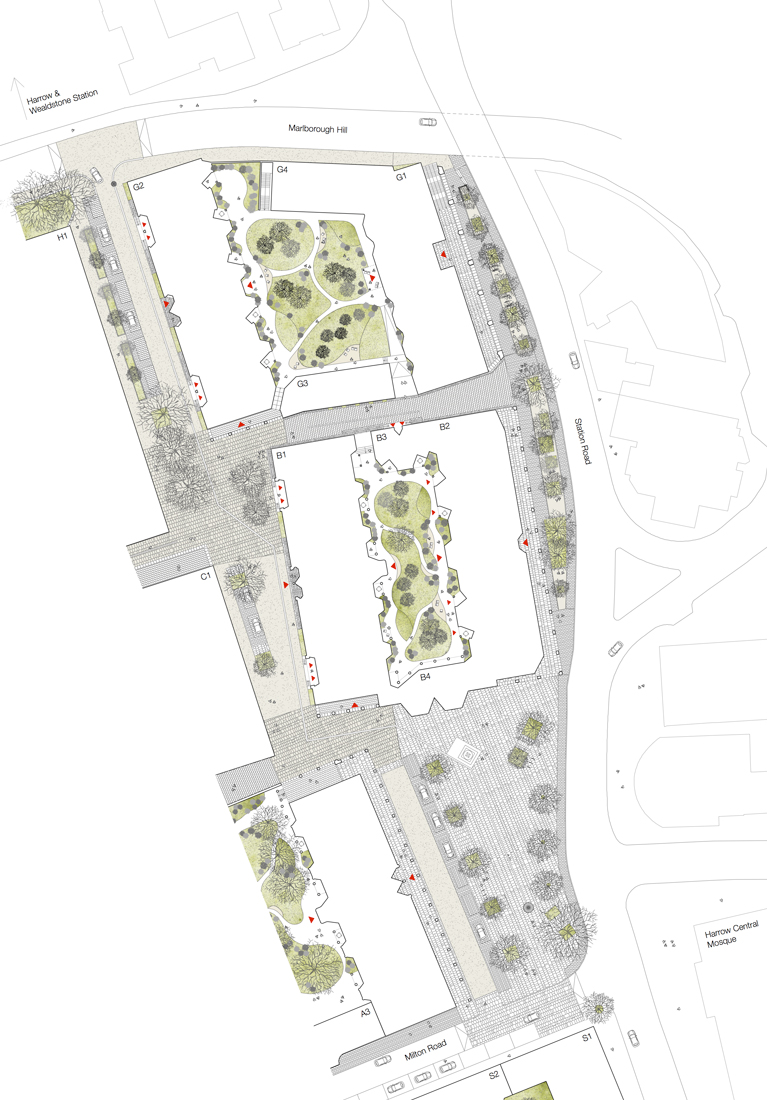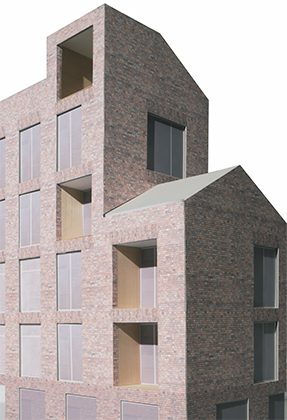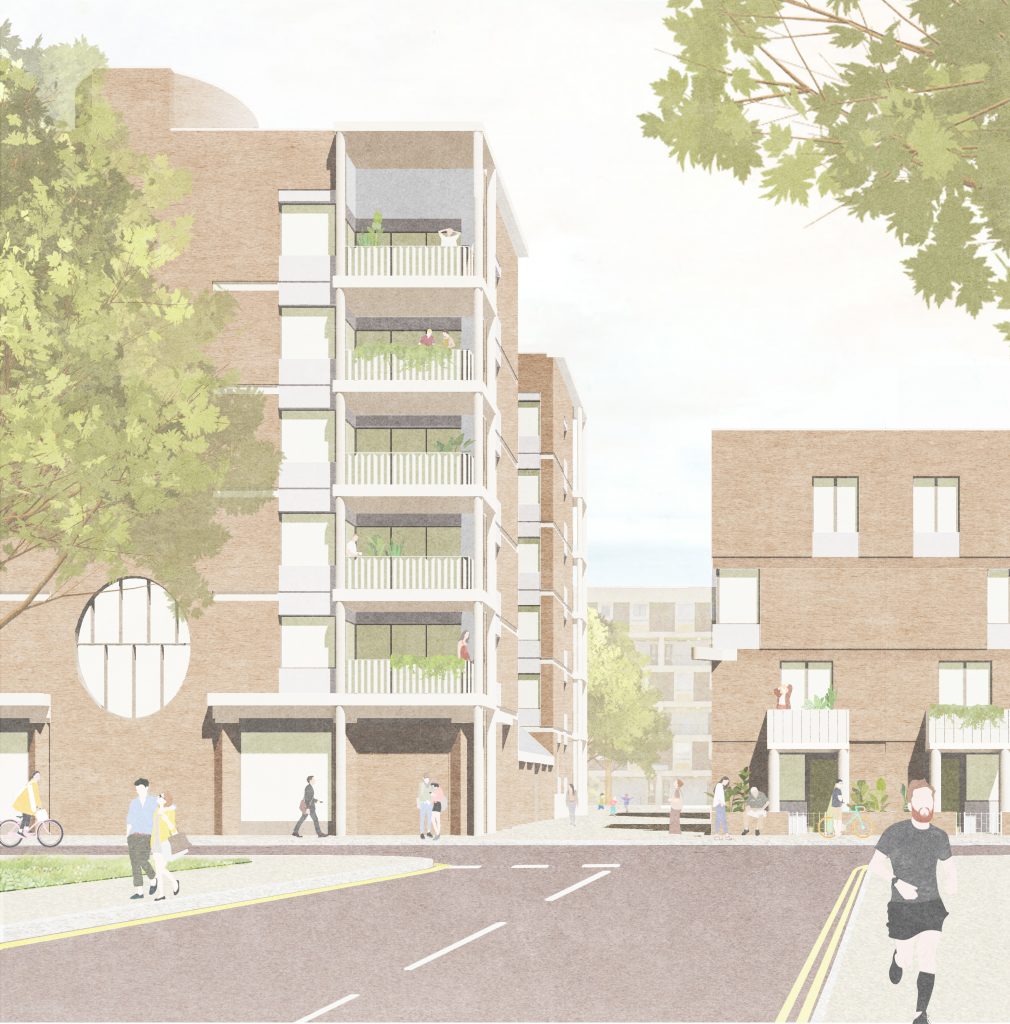Poets’ Corner, Harrow, London
- client: Harrow Council
- size: 4.4 ha
- status: on going
Poets’ Corner is the flagship project in Harrow council’s regeneration programme. It is a project to redevelop the existing council office site into a new urban quarter – creating 950 new homes, a new school and 2,000sqm of commercial space. The design is being led by Stephen Taylor Architects in collaboration with Sergison Bates, Allies and Morrison and Jonathan Cooke Landscape Architects.
The project introduces a density to the site which is higher than the surrounding, suburban neighbourhoods. It marks an exciting point of change for Harrow. One challenge of the masterplan design was knowing how to respond to this change in a meaningful way. How can higher densities be introduced to outer London boroughs in a way which reconciles the different scales and characters of neighbourhood.
Our approach was to maintain clarity and create a new urban quarter which is distinct. It is a place which can be clearly identified and understood as a neighbourhood. This is achieved through developing consistency in materiality, in building typology and in the scale of streets. In particular it is the intimate streets and lanes which give the quarter its character.
